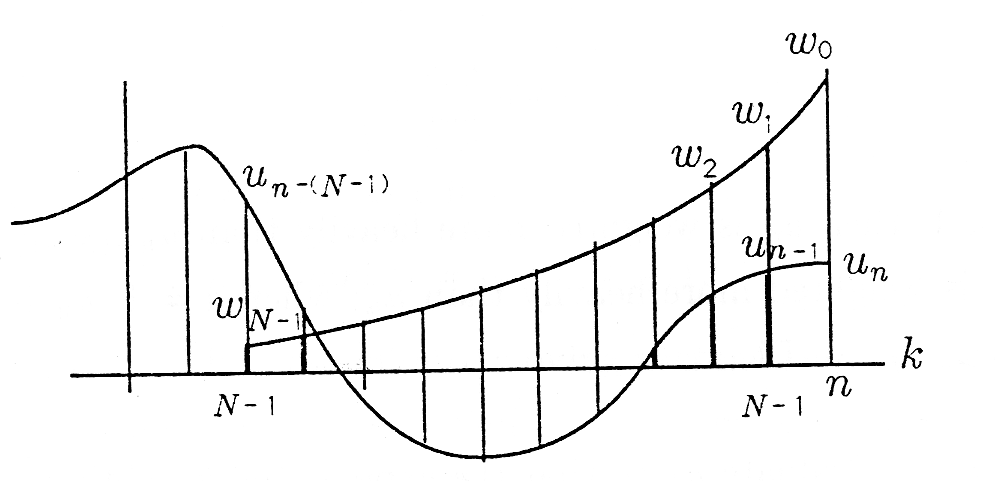| << Chapter < Page | Chapter >> Page > |
Moving averages are generalizations of weighted averages. They are designed to “run along an input sequence, computing weighted averages as they go.” A typical moving average over N inputs takes the form
The most current input, , is weighted by ; the next most current input, , is weighted by ; and so on. This weighting is illustrated in Figure 1 . The sequence of weights, through , is called a “window,” a “weighting sequence,” or a “filter.” In the example illustrated in Figure 6.8, the currentvalue is weighted more heavily than the least current value. This is typical (but not essential) because we usually want to reflect more of the recent past than the distant past.

When the weights are all equal to , then the moving average is a “simple moving average”:
This is the same as the simple average , but now the simple average moves along the sequence of inputs, averaging the most current values.
When the weights equal for , then the moving average takes the form
.
When , then u n is weighted more heavily than when , is weighted more heavily than u n ; when is weighted the same as

Notification Switch
Would you like to follow the 'A first course in electrical and computer engineering' conversation and receive update notifications?